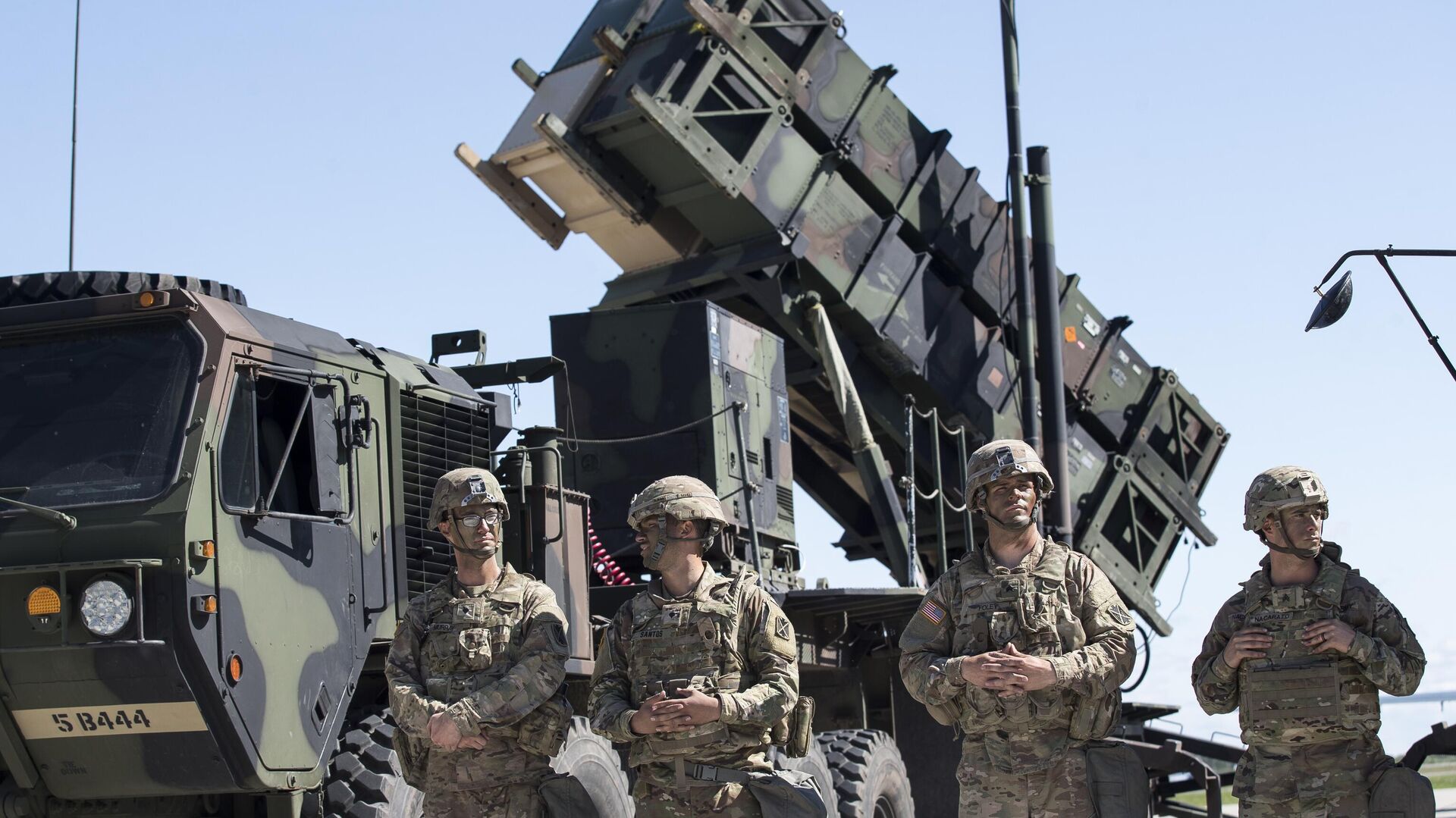https://sputnikglobe.com/20230621/delivery-delays-and-cost-surges-plague-us-missile-defense-radar-project-1111357530.html
Delivery Delays and Cost Surges Plague US Missile Defense Radar Project
Delivery Delays and Cost Surges Plague US Missile Defense Radar Project
Sputnik International
Lockheed Martin's new ground radar system, meant to bolster the US missile defense in Alaska, is being hampered by immense delays and cost overruns, raising serious concerns about the project.
2023-06-21T17:59+0000
2023-06-21T17:59+0000
2025-04-07T11:07+0000
military
newsfeed
opinion
alaska
us government accountability office (gao)
government accountability office
us missile defense agency (mda)
lockheed martin
europe
viral news
https://cdn1.img.sputnikglobe.com/img/07e7/05/11/1110412183_0:163:3065:1887_1920x0_80_0_0_080655e63c912b4cb118e03ee44a70f3.jpg
Lockheed Martin Corporation is grappling with severe slowdowns in the delivery of its new radar system, an integral part of the broader US missile defense network, according to a report by congressional auditors. The project, conceived to boost the nation's capability to detect and neutralize potential missile threats from adversaries, has been hamstrung by persistent time overruns and spiraling costs. In a report to congressional committees, the US Government Accountability Office said that "according to the Department of Defense (DoD), potential adversaries are investing substantially in their own offensive missile capabilities and continue to make significant advances. For example, according to the DoD, North Korea continues to develop ballistic missiles capable of threatening the US homeland." This revelation started making its way into various media sources recently.Severe SetbacksWith COVID-19 disruptions and technical complexities, the project has been delayed by more than four-and-a-half months, incurring $43.7Mln in costs. The Government Accountability Office (GAO) revealed that problems, including a radar component failure, have added nine months to the schedule. This drawback has also postponed a crucial flight test, implying that the radar might be delivered without its capabilities and limitations. In a June 2022 report, 40 major defense acquisition programs weren't on schedule, with more than 29 yet to deliver capacity according to the GAO.Unforeseen cost surges have plagued the project, originally contracted to be worth $784Mln, forcing the US Missile Defense Agency to shoulder a portion of the financial burden. Despite the government's absorption of $75Mln in cost overruns, industry giant Lockheed Martin finds it is bracing itself for mounting costs. The projected final cost of the project has yet to be revealed by the company, fostering a sense of uncertainty about the eventual cost implications of this project. MDA Eyes More Spending Despite shortfalls in planned delivery and testing goals in 2022, the DoD's Missile Defense Agency (MDA) has requested $10.9Bln for the 2024 fiscal year. Furthermore, the MDA is requesting another $55.3Bln for the Pentagon's five-year budget planning period, 2024 to 2028 fiscal years. This predicament highlights the recurrent challenges faced in colossal US military expenditure.
alaska
Sputnik International
feedback@sputniknews.com
+74956456601
MIA „Rossiya Segodnya“
2023
Sputnik International
feedback@sputniknews.com
+74956456601
MIA „Rossiya Segodnya“
News
en_EN
Sputnik International
feedback@sputniknews.com
+74956456601
MIA „Rossiya Segodnya“
Sputnik International
feedback@sputniknews.com
+74956456601
MIA „Rossiya Segodnya“
dod, gao, lockheed martin, covid-19, us homeland, north korea, new ground radar system, us missile defense agency, us military expenditure, defense, missile defense agency
dod, gao, lockheed martin, covid-19, us homeland, north korea, new ground radar system, us missile defense agency, us military expenditure, defense, missile defense agency
Delivery Delays and Cost Surges Plague US Missile Defense Radar Project
17:59 GMT 21.06.2023 (Updated: 11:07 GMT 07.04.2025) Lockheed Martin's new ground radar system, designed to bolster the US missile defense in Alaska, is being hampered by immense delays and cost overruns, raising serious concerns about the project.
Lockheed Martin Corporation is grappling with severe slowdowns in the delivery of its new radar system, an integral part of the broader US missile defense network, according to a report by
congressional auditors. The project, conceived to boost the nation's capability to detect and neutralize potential missile threats from adversaries, has been hamstrung by persistent time overruns and spiraling costs.
In a report to congressional committees, the US Government Accountability Office said that "according to the Department of Defense (DoD), potential adversaries are investing substantially in their own offensive missile capabilities and continue to make significant advances. For example, according to the DoD, North Korea continues to develop ballistic missiles capable of threatening the US homeland." This revelation started making its way into various media sources recently.
With COVID-19 disruptions and technical complexities, the project has been delayed by more than four-and-a-half months, incurring $43.7Mln in costs. The Government Accountability Office (GAO) revealed that problems, including a radar component failure, have added nine months to the schedule. This drawback has also postponed a crucial flight test, implying that the radar might be delivered without its capabilities and limitations. In a
June 2022 report, 40 major defense acquisition programs weren't on schedule, with more than 29 yet to deliver capacity according to the GAO.
Unforeseen cost surges have plagued the project, originally contracted to be worth $784Mln, forcing the US Missile Defense Agency to shoulder a portion of the financial burden. Despite the government's absorption of $75Mln in cost overruns, industry giant Lockheed Martin finds it is bracing itself for mounting costs. The projected final cost of the project has yet to be revealed by the company, fostering a sense of uncertainty about the eventual cost implications of this project.
Despite shortfalls in planned delivery and testing goals in 2022, the DoD's Missile Defense Agency (MDA) has requested $10.9Bln for the 2024 fiscal year. Furthermore, the MDA is requesting another $55.3Bln for the Pentagon's five-year budget planning period, 2024 to 2028 fiscal years. This predicament highlights the recurrent challenges faced in colossal US military expenditure.


